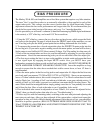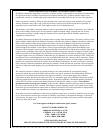
Your 250's or 500's have been factory set to the correct mains voltage for your country (well, that is what we intended to
do when we knew where it would be initially shipped). There is NO voltage changeover switch inside! The serial number
sticker badge will proclaim the voltage we initially set when the unit first shipped from the factory. Additionally there might
be a yellow 120V sticker or a red 230V sticker placed near the IEC power inlet. Check the sticker and the serial number
voltage indication for proper mains voltage and confirm that agrees with what comes out of your wall. THIS IS
IMPORTANT. Failure to properly comply with mains voltage requirements can cause extensive damage to the system,
which of course would not be covered by the warranty. If you relocate from, say, a 120V country to a 240V country, you
will need to re-wire the power transformer primaries to agree with new new mains voltage and you will also need replace
the mains fuse value with the proper value for the new operating voltage. Or you can ignore all this and use a step-up (or
step-down) outboard converting transformer to power the unit from. But he had better be BIG for these huge amps...
ALWAYS DISCONNECT THE IEC MAINS CABLE BEFORE OPENING THE UNIT AND
ALWAYS ALLOW 30 MINUTES TO ALLOW THE CAPACITORS TO DISCHARGE FOR
SAFETY'S SAKE SO YOU DO NOT HAVE A SHOCKING EXPERIENCE. THOSE
EXPERIENCES ARE NOT EVEN A LITTLE FUN.
The mains fuse may be checked by first disconnecting the IEC mains cord from the power supply’s power inlet plug. Then
grab the knob cap and gently pull out the fuseholder retainer cover. The fuse and cap should spring outward toward your
fingers. Inspect the fuse for the proper rating; change if necessary. The B+ fuse cap cover is to be rotated counter clockwise
with a 1/4" flat screwdriver to release it from its housing.
Refer to the fuse rating charts in the specifications section of this manual. If you do not know what a blown fuse looks
like, you may measure for continuity across the fuse ends with a multimeter set to read resistance, ohms, or the omega
symbol. If your meter reads “OL” when you measure across the fuse, that means “Open Leads” and that would mean the
fuse is blown. A blown fuse usually indicates A Very Bad Thing occurred. If this has happened to you, try to figure out
why it may have happened. (Using a Fast Blow fuse when we have specified a SLO-BLO fuse is one reason...) If you have
no idea why a fuse might have just blown on its own, you might want to consult with Manley Labs or your dealer for further
advice as to what Very Bad Thing might have occured, like the power transformer might have decided to retire early or
protest its oppressive conditions.
One way this could happen is by running the wrong mains voltage into the unit. Be sure not to do that.
If you live in a strange place...
Export units for certain markets have a moulded mains plug fitted to comply with local requirements. If your unit does
not have a plug fitted the coloured wires should be connected to the appropriate plug terminals in accordance with the
following code.
GREEN/YELLOW EARTH terminal
BLUE NEUTRAL terminal
BROWN LIVE terminal
As the colours of the wires in the mains lead may not correspond with the coloured marking identifying the terminals in
your plug proceed as follows:
The wire which is coloured GREEN/YELLOW must be connected to the terminal in the plug which is marked by the letter
E or by the safety earth symbol or coloured GREEN or GREEN and YELLOW.
The BLUE coloured wire must be connected to the terminal in the plug which is marked by the letter N or coloured BLACK.
The BROWN coloured wire must be connected to the terminal in the plug which is marked by the letter L or coloured RED.
DO NOT CONNECT OR SWITCH ON THE MAINS SUPPLY UNTIL ALL OTHER
CONNECTIONS HAVE BEEN MADE. (...or else...)
4
MAINS CONNECTIONS


















